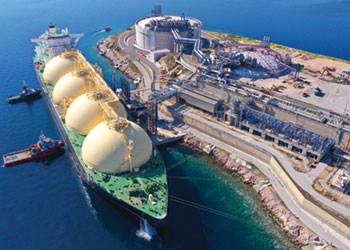
If Oman was to fully utilise its land for renewable hydrogen production, it would have 50,000 sq km, or a little bigger than the size of Slovakia, to make use of.
This amount of land would be enough to potentially produce 25 million tons (Mt) of hydrogen, three times Oman’s 2050 targets, says a report by the International Energy Agency (IEA).
The country has set targets to produce at least 1 Mt of renewable hydrogen by 2030, up to 3.75 Mt by 2040 and up to 8.5 Mt by 2050.
To lead the strategy, the government has established Hydrogen Oman (HYDROM), an independant entity fully owned by Energy Development Oman.
It is estimated that an investment of $140 billion until 2050 would be needed to achieve these targets. This will be on top of the $190-billion investments needed for the National Strategy for an ‘Orderly Transition’ to Net Zero.
This strategy will be underpinned by a set of fundamental objectives: ensure environmental sustainability, minimise economic costs to Omani citizens and industries, optimise the economic impact arising from the transition, encourage job creation, and ensure a secure energy supply.
In 2022, Oman announced to become net-zero by 2050, and pledged to increase the use of renewables in the power mix.
It also aims to significantly ramp up domestic production of hydrogen from renewable electricity.
Ambition aside, the country is well placed to produce large quantities of renewable hydrogen and hydrogen-based fuels.
And if things go as planned, Oman could well become the largest exporter of hydrogen in the Middle East and the sixth largest global exporter of hydrogen by 2030.
This would also make renewable hydrogen a significant new source of export revenue. Meeting Oman’s 2040 hydrogen target would represent 80 per cent of today’s LNG exports in energy-equivalent terms, while achieving the 2050 target would almost double them.
Oman benefits from high-quality renewable resources (both solar PV and onshore wind) and a convenient location, well-placed to access the main import markets like Europe and Japan.
The country also has vast amounts of land for large-scale project development, and existing fossil fuel infrastructure that can be directly used or repurposed for low-emission fuels.
Proving beneficial here will be the country’s extensive expertise in handling and exporting both LNG and ammonia that are directly applicable to renewable hydrogen and hydrogen based fuels.
With this trend, the cost of producing renewable hydrogen in Oman could be as low as $1.6 per kg of H2 by the end of the decade, positioning Oman as one of the most competitive producers of renewable hydrogen globally.
So far, 1,500 sq km of land has been put aside for development with a potential to produce around 1 Mt per yr of renewable hydrogen.